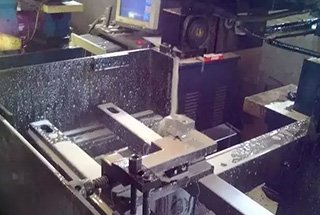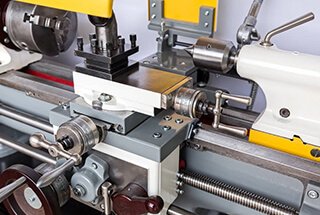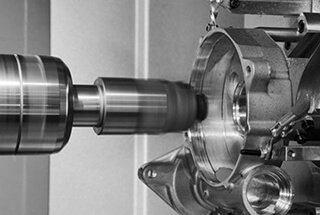
Have you ever wondered how tiny holes are drilled with such precision in metal? This article explores the fascinating world of drilling, revealing the secrets behind various drill bits and techniques. You’ll learn how professionals achieve perfect holes and the tools they use. Get ready to uncover the intricacies of drilling!

Drilling encompasses a range of precision cutting processes, including drilling, reaming, and counterboring, each utilizing specialized drill bits to achieve specific outcomes in metalworking and manufacturing.
Drilling is a fundamental cutting operation that creates cylindrical holes in solid materials using rotary cutting tools. The most common types include:
These tools can produce through-holes (penetrating the entire workpiece) or blind holes (with a defined depth), with diameters typically ranging from 0.1 mm to over 100 mm.
Reaming is a finishing process that enhances the accuracy, surface finish, and dimensional consistency of pre-existing holes. Reamers, characterized by their straight or helical flutes and precise cutting edges, can achieve tolerances as tight as ±0.013 mm (0.0005 inches). This process is crucial in applications requiring high-precision fits, such as in aerospace or automotive industries.
Counterboring is a secondary operation performed on pre-drilled holes to create specific features:
Counterbore drills, featuring a pilot that aligns with the existing hole and a larger diameter cutting section, ensure concentricity and dimensional accuracy of these features.
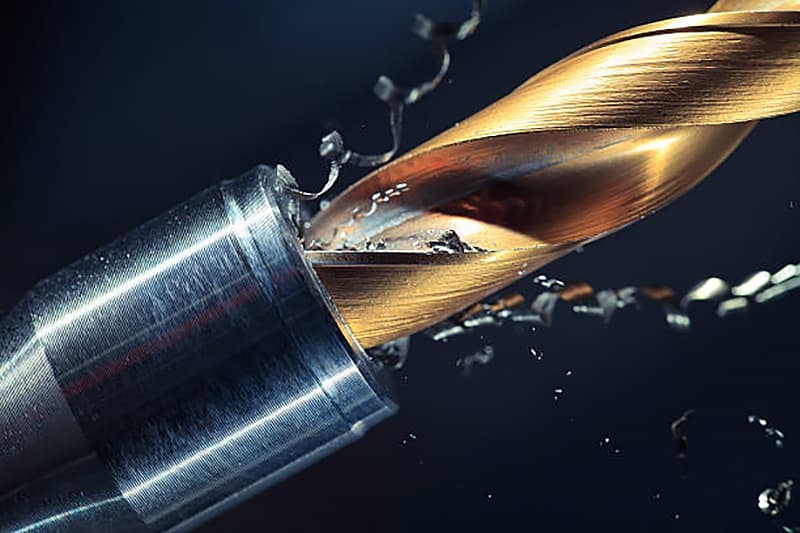
There are two main methods of drilling:
1) the workpiece remains stationary while the drill bit rotates and advances axially, which is generally applied on drilling machines, boring machines, machining centers, or combination machine tools;
2) the workpiece rotates while the drill bit only advances axially, which is generally applied on lathes or deep hole drilling machines. Twist drills can produce hole diameters ranging from 0.05mm to 100mm, while flat drills can achieve up to 125mm. For holes larger than 100mm, a smaller pre-drilled hole (or reserved casting hole) is usually made first, and then the hole is bored to the required size.
During drilling, the drilling speed (v) is the circumferential speed of the drill bit’s outer diameter (m/min), and the feed rate (f) is the axial distance that the drill bit (or workpiece) moves per revolution while drilling into the hole (mm/r).
Figure 2 shows the drilling parameters of a twist drill. As a twist drill has two cutting edges, the feed rate for each tooth is calculated as af=f/2 (mm/tooth).
There are two cutting depths: when drilling holes, it is calculated as half of the drill bit diameter (d); when reaming, it is calculated as (d-d0)/2, where d0 is the pre-existing hole diameter.
The chip thickness cut by each tooth is a0=afsin(Κr), with units in millimeters, where Κr is half of the drill bit’s point angle.
When using high-speed steel twist drills to drill steel materials, the drilling speed is usually set between 16-40 m/min; using hard alloy drill bits can double the drilling speed.
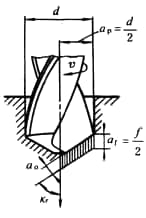
During the drilling process, a twist drill has two primary cutting edges and one transverse edge, commonly referred to as “one point (drill center) and three blades”, which participate in cutting.
The twist drill works in a semi-enclosed state where the transverse edge is severely squeezed and chip removal is difficult. Therefore, the processing conditions are more complex and challenging than turning or other cutting methods, resulting in lower processing accuracy and rougher surfaces.
The precision of drilling steel materials is generally IT13-10, with surface roughness of Ra20-1.25μm, while the precision of reaming can reach IT10-9, with surface roughness of Ra10-0.63μm.
The quality and efficiency of the drilling process largely depend on the shape of the cutting edge of the drill bit.
In production, the shape and angle of the cutting edge of a twist drill are often changed by sharpening to reduce cutting resistance and improve drilling performance. China’s group drill is an example of a twist drill produced using this method.
When the ratio of depth (l) to diameter (d) of a drilled hole is greater than six, it is generally considered deep hole drilling. The drill bit used for deep hole drilling is slender and has poor rigidity. During drilling, the drill bit is prone to deviation and friction with the hole wall, making it difficult for cooling and chip removal.
Therefore, when the l/d ratio is greater than 20, a specially designed deep hole drill bit is required and a cutting fluid with a certain flow rate and pressure is used for cooling and chip flushing to achieve high-quality drilling results with high efficiency.



A drill bit is a cutting tool used for drilling holes in solid materials, either to create through holes or blind holes, and can also be used to enlarge existing holes.
Commonly used drill bits include twist drills, flat drills, center drills, deep hole drills, and counterbore drills. Although reamers and countersinks are not used to drill holes in solid materials, they are often classified as drill bits.
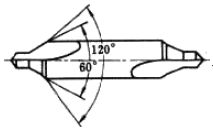


Figure 3. Various types of drill bits.
Twist drills are the most widely used hole processing tools. The diameter ranges from 0.25mm to 80mm. It is mainly composed of a working part and a shank part.
The working part has two helical grooves resembling a twisted ribbon, which is why it is called a twist drill. In order to reduce the friction between the guiding part and the hole wall during drilling, the diameter of the twist drill gradually decreases from the tip to the shank in a tapered shape.
The spiral angle of the twist drill mainly affects the size of the front angle of the cutting edge, the strength of the edge blade, and the chip removal performance, usually ranging from 25° to 32°.
The spiral groove can be processed by milling, grinding, hot rolling, or hot extrusion, and the cutting part of the drill bit is formed after being sharpened.
The top angle of the cutting part of a standard twist drill is 118°, the transverse edge inclination angle is 40° to 60°, and the back angle is 8° to 20°. Due to structural reasons, the front angle is gradually reduced from the outer edge to the middle, and there is a negative front angle (up to about -55°) at the transverse edge, which exerts a pressing effect during drilling.
In order to improve the cutting performance of the twist drill, the cutting part can be ground into various shapes (such as group drills) according to the properties of the material being processed. The shank of a twist drill has two forms: straight shank and taper shank. During processing, the former is clamped in the drill chuck, and the latter is inserted into the tapered hole of the machine tool spindle or tailstock.
Generally, twist drills are made of high-speed steel. Twist drills with cemented carbide blades or teeth are suitable for processing cast iron, hardened steel, non-metallic materials, etc., and solid carbide small twist drills are used for processing instrument parts and printed circuit boards, etc.
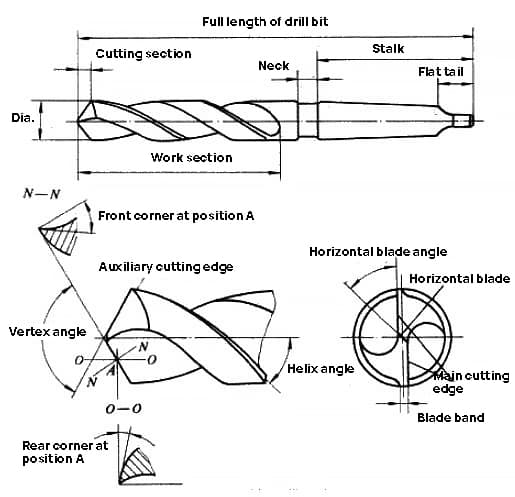
The cutting part of the flat drill is shovel-shaped, and its structure is simple with a low manufacturing cost. The cutting fluid can be easily introduced into the hole, but its cutting and chip removal performance is poor. Flat drills can be divided into two types: integral and assembled.
The integral type is mainly used for drilling micro-holes with a diameter of 0.03mm to 0.5mm. Assembled flat drills have replaceable blades and can be internally cooled. They are mainly used for drilling large holes with a diameter of 25mm to 500mm.
Deep hole drills usually refer to tools that have a hole depth-to-diameter ratio greater than 6. Commonly used deep hole drills include gun drills, BTA deep hole drills, jet drills, DF deep hole drills, etc. Counterbore drills are also commonly used for deep hole processing.
Reamers have 3-4 teeth and are more rigid than twist drills. They are used to enlarge existing holes and improve processing precision and smoothness.
Counterbore drills have multiple teeth and are used to shape the end of holes, such as counterbore holes for various types of countersunk screws or to flatten the outer end surface of holes.
Center drills are used to drill center holes in shaft-type workpieces. Essentially, they are composed of twist drills and counterbore drills with very small helix angles, and are also called compound center drills.
When selecting a drill for a specific hole machining operation, process engineers must prioritize the consideration of hole depth. As the depth of the machined hole increases, the volume of chips generated during the cutting process escalates proportionally. This relationship between hole depth and chip volume presents a significant challenge in deep hole drilling operations.
Efficient chip evacuation is crucial for the success of any hole machining task, particularly in deep hole applications. If the chips produced during machining cannot be evacuated promptly and effectively, they may accumulate and clog the drill’s flutes. This obstruction can lead to several detrimental effects:
To address these challenges, parabolic drills have emerged as a superior solution for deep hole machining. The distinguishing feature of parabolic drills is their unique flute geometry, characterized by a parabolic profile that gradually widens from the drill point to the shank. This innovative design offers several advantages:
When implementing parabolic drills in deep hole machining operations, it is essential to consider additional factors such as cutting parameters, coolant delivery methods (e.g., through-tool coolant), and the potential need for pecking cycles in extremely deep holes. By leveraging the advantages of parabolic drills and employing appropriate machining strategies, manufacturers can significantly enhance the efficiency, quality, and reliability of deep hole machining processes across a wide range of materials and applications.
When selecting the optimal drill bit for a specific hole-making operation, process engineers must consider the length-to-diameter (L/D) ratio of the drill bit. This crucial parameter is defined as the ratio between the depth of the hole to be machined and the diameter of the drill bit. For instance, a 12.7mm diameter drill bit used to create a 38.1mm deep hole would have an L/D ratio of 3:1.
For L/D ratios of approximately 4:1 or less, standard twist drill bits generally provide efficient chip evacuation from the cutting zone. However, when the L/D ratio exceeds this threshold, specially engineered deep hole drill bits become necessary to ensure effective machining.
As the L/D ratio surpasses 4:1, standard twist drills struggle to evacuate chips from the cutting area and expel them from the hole. This leads to rapid clogging of the drill’s flutes, necessitating a technique known as “peck drilling.” This method involves repeatedly retracting the drill to clear chips and then re-engaging, which can significantly impact tool life, machining efficiency, and hole quality. Each retraction and re-entry increases the risk of drill wandering, potentially causing oversized holes that exceed specified tolerances.
To address the challenges associated with deep hole drilling, manufacturers have developed two innovative drill bit designs in recent years:
These specialized drill bits feature optimized geometries that enhance chip formation and evacuation, allowing for more efficient deep hole drilling operations. The parabolic flute design provides improved chip control and reduces cutting forces, while the wide-land variant offers enhanced stability and straightness in deep hole applications.
When selecting a drill bit for deep hole operations, engineers should consider factors such as:
The chip evacuation flute of a parabolic drill bit features a distinctive parabolic profile, optimized for continuous deep-hole drilling operations. This design allows for length-to-diameter ratios of up to 15:1 in materials with hardness not exceeding 25-26 HRC, including low carbon steel, various aluminum alloys, and copper alloys.
For instance, a 12.7mm diameter parabolic drill bit can effectively machine holes up to 190mm deep, demonstrating its exceptional deep-drilling capabilities.
The parabolic flute geometry provides a significantly larger chip evacuation space compared to conventional drill bits. This enhanced design facilitates rapid chip removal from the cutting edge while simultaneously allowing increased coolant flow to the cutting zone. Consequently, this reduces the risk of friction-induced heat buildup and chip welding, which are common challenges in deep-hole drilling operations.
Moreover, the parabolic design contributes to reduced power consumption, lower torque loads, and minimized cutting impact during machining, resulting in improved overall efficiency and tool life.
Parabolic drill bits typically feature a helix angle of 36°-38°, which is notably steeper than the standard twist drill’s 28°-30°. This increased helix angle is indicative of a more aggressive “twist” in the drill’s geometry, directly correlating to faster drilling speeds and more efficient chip evacuation.
Another key characteristic of parabolic drill bits that enhances their deep-hole machining capability is their thicker web (the central core of the drill bit that remains after the flutes are ground). While the web of a standard twist drill typically accounts for about 20% of the drill’s diameter, the web of a parabolic drill bit can comprise up to 40% of the total diameter.
In deep-hole applications, this thicker web significantly increases the drill’s rigidity and improves process stability. The drill point of parabolic bits often incorporates a split-point design, which allows for the use of a larger web diameter without compromising cutting efficiency. Additionally, this design feature helps prevent drill wandering during the initial stages of hole entry, ensuring improved hole positioning accuracy.
Parabolic drill bits are typically manufactured from high-speed steel (HSS) and can be further enhanced with advanced surface coatings such as TiN, TiAlN, or TiCN. These coatings can significantly improve wear resistance, reduce friction, and extend tool life, particularly in challenging materials or high-speed machining conditions.
To address the challenges of deep hole drilling in difficult-to-machine materials, such as cold-worked hardened steels and superalloys, leading tool manufacturers have developed advanced wide-blade parabolic drills. These drills incorporate several innovative features that enhance their performance and longevity in demanding applications.
While sharing some characteristics with conventional parabolic drills, wide-blade variants feature an optimized helix angle (typically 36°-38°) that facilitates efficient chip evacuation. The drill’s core is engineered with increased thickness, providing superior rigidity and stability during deep hole machining operations, which is crucial for maintaining tight tolerances and preventing drill wandering.
The key differentiator of wide-blade parabolic drills lies in their unique chip flute geometry and cutting edge design. The cutting edge seamlessly blends into the chip evacuation flute, resulting in a more robust and rigid cutting edge profile. This design innovation not only enhances the drill’s structural integrity but also promotes smooth chip flow, reducing the risk of chip packing and subsequent drill failure.
In deep hole drilling applications, frictional heat generation can lead to localized softening or annealing of the cutting edge, accelerating tool wear. The ability of a cutting tool to maintain its hardness at elevated temperatures is referred to as “hot hardness” or “red hardness.” Wide-blade parabolic drills are typically manufactured from advanced high-speed steel (HSS) alloys, with cobalt-enriched HSS being a popular choice for extreme applications.
Cobalt high-speed steel, containing 5-8% cobalt, exhibits superior hot hardness compared to conventional HSS. This characteristic translates to extended tool life and enhanced wear resistance, particularly in high-temperature cutting conditions. Additionally, the cobalt content improves the steel’s thermal conductivity, allowing for more efficient heat dissipation during the cutting process.
To further enhance performance, many wide-blade parabolic drills feature specialized coatings, such as TiAlN (Titanium Aluminum Nitride) or AlCrN (Aluminum Chromium Nitride). These coatings provide additional wear resistance, reduce friction, and improve heat dissipation, contributing to increased productivity and tool longevity in challenging deep hole drilling operations.
Advanced surface coatings play a crucial role in enhancing the performance and longevity of both standard parabolic drills and wide-blade parabolic drills. The following coatings are widely employed in modern machining operations:
① Titanium nitride (TiN) coating: This golden-hued coating significantly extends drill bit lifespan and improves hole quality. TiN-coated drill bits excel in high-speed drilling applications across various materials, particularly steel alloys. The coating’s low friction coefficient (typically 0.4-0.5) reduces heat generation and chip adhesion, enabling cutting speeds up to 30% higher than uncoated tools.
② Titanium carbonitride (TiCN) coating: At optimal cutting temperatures, TiCN-coated drill bits demonstrate superior hardness (up to 3000 HV), enhanced toughness, and improved wear resistance compared to TiN coatings. This bluish-gray coating is ideal for high-speed drilling of ferrous materials, especially hardened steels. TiCN coatings can maintain their properties at temperatures up to 400°C, allowing for increased cutting speeds and feed rates.
However, caution is advised when machining non-ferrous metals due to TiCN’s high chemical affinity with these materials, which can lead to accelerated tool wear and potential workpiece contamination.
③ Titanium aluminum nitride (TiAlN) coating: This violet-black coating significantly enhances drill bit performance, particularly in high-temperature cutting environments. TiAlN forms a protective aluminum oxide layer at elevated temperatures, providing thermal insulation and oxidation resistance up to 800°C. This allows for efficient dry and near-dry machining, reducing or eliminating the need for coolants in many applications.
Similar to TiCN, TiAlN coatings are less suitable for non-ferrous metal machining due to potential chemical interactions. However, they excel in processing high-strength steels, stainless steels, and titanium alloys, offering tool life improvements of up to 300% compared to uncoated drills in these materials.
In deep hole machining, optimizing drilling speed and feed rate based on the specific length-to-diameter (L/D) ratio is crucial for maximizing the cutting performance and tool life of the drill bit. The following guidelines provide a systematic approach to parameter adjustment for various L/D ratios:
For L/D ratio of 4:1:
For L/D ratio of 5:1:
For L/D ratios between 6:1 and 8:1:
These reductions help mitigate the increased cutting forces, heat generation, and chip evacuation challenges associated with deep hole drilling. It’s important to note that these are general guidelines and may require fine-tuning based on specific material properties, coolant efficiency, and machine rigidity.
While parabolic drill bits typically cost 2-3 times more than standard twist drill bits, their superior performance in deep hole machining (L/D ratio > 4:1) offers significant advantages:
These benefits often result in a lower cost per hole drilled, making parabolic drill bits the preferred choice for mechanical technicians when processing deep holes. The initial investment in these specialized tools is typically offset by improved productivity, reduced tool changes, and superior hole quality, especially in high-volume production environments or when working with expensive workpieces where scrap reduction is critical.

